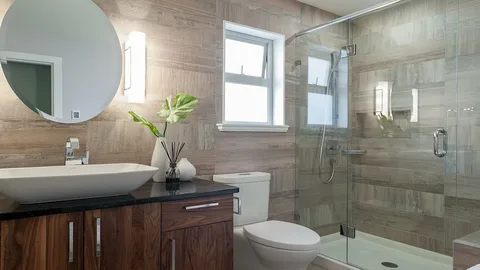Renovating a small bathroom can significantly improve both the functionality and aesthetics of your home. However, due to the limited space, it’s crucial to approach the project with careful planning. Whether you’re upgrading outdated fixtures or completely redesigning the space, knowing where to start is half the battle. In this guide, we’ll walk you through the essential planning tips before starting small bathroom renovations to help you avoid common pitfalls and achieve the results you want.
1. Define Your Renovation Goals
Before picking up a hammer or calling a contractor, clearly define what you want to achieve. Are you looking to improve storage? Increase resale value? Make the bathroom more accessible? Identifying your goals early will help guide every decision you make, from design to materials.
Ask Yourself:
- What is my budget?
- Do I need to move plumbing or electrical points?
- Am I doing a cosmetic update or a full remodel?
These questions are part of the essential planning tips before starting small bathroom renovations because they lay the groundwork for a realistic and successful project.
2. Measure Everything — Twice
In a small bathroom, every inch counts. Take precise measurements of the space, including the placement of doors, windows, plumbing fixtures, and electrical outlets. This helps in selecting appropriately sized vanities, toilets, and tubs, avoiding the mistake of buying items that simply don’t fit.
Pro Tip: Use graph paper or design software to sketch a layout with accurate dimensions to help visualize the final design.
3. Choose the Right Materials
When dealing with tight spaces, the materials you choose can make or break the final look and feel. Consider space-saving fixtures like wall-mounted sinks and compact toilets. Use light-colored tiles and mirrors to create an illusion of space. Also, prioritize materials that are moisture-resistant and easy to clean.
This step is one of the essential planning tips before starting small bathroom renovations, especially if you want a combination of style and practicality in a small footprint.
4. Set a Realistic Budget and Timeline
Budgeting is not just about calculating the cost of materials and labor. Don’t forget to include hidden costs such as permit fees, plumbing upgrades, and unexpected repairs like mold or water damage.
Also, factor in the time it will take — small doesn’t always mean fast. Delays in shipping, contractor availability, or structural surprises can extend the timeline.
5. Consult a Professional
While DIY might seem like a budget-friendly approach, professional guidance can save you money and stress in the long run. Even if you plan to handle parts of the project yourself, consider consulting a contractor or interior designer for feedback on your plans.
Hiring a professional is often included in the essential planning tips before starting small bathroom renovations because experts can foresee issues you may not and ensure the renovation meets code and safety standards.
Conclusion
Small bathroom renovations can offer big returns when done right, but they require thoughtful preparation. By following these essential planning tips before starting small bathroom renovations, you’ll be in a better position to avoid costly mistakes, stay within budget, and create a bathroom that feels larger, looks better, and functions efficiently. Take the time to plan carefully — your future self will thank you.

